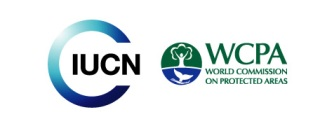PDF: Tourism – Protected Area Partnerships in Australia: Designing and Managing for Success
Citation
Moore, S., Weiler, B., Croy, G., Laing, J., Lee, D., Lockwood, M., Pfueller, S., Wegner, A. (2009). Tourism – Protected Area Partnerships in Australia: Designing and Managing for Success. Gold Coast, Australia: CRC for Sustainable Tourism Pty Ltd.
Download PDF
Summary The last decade has seen increasing recognition of the importance of national parks and protected areas to tourism in Australia and elsewhere. For example, protected areas in Australia received 84 million visits in 2003 (DITR 2003), with estimates in one state alone (Queensland) of visitor expenditure associated with protected areas of $602 million to $858 million per year (Kinhill Economic 1998, in Lindberg 2004). At the same time the resources available to provide and manage such tourism have not necessarily been available as government agencies downsize to cope with a reduction in budgets. Against this backdrop, partnerships between the tourism
industry and protected area agencies are increasingly being regarded as a way of encouraging more involvement by the private sector and local communities in protected areas, enhancing tourism opportunities and garnering much needed resources for protected area management.
In Australia, the need for these partnerships and their potential contribution to sustainable tourism has been identified in a number of recent reports. The first of these was commissioned and published by the Sustainable Tourism Cooperative Research Centre. The first report in 2001 provided general principles and guidelines for tourism – protected area partnerships, while a second, completed the following year, reported on the potential contributions of partnerships to sustainable tourism in protected areas and beyond. In 2003, the Department of Industry, Tourism and Resources published a report exploring common goals between tourism and conservation. In the same year, the Commonwealth Government released its Tourism White Paper advocating partnerships to grow tourism in protected areas. The critical need for partnerships between national parks and tourism was reiterated in two Tourism and Transport Forum Australia reports, in 2004 and 2007. A recently released report by the NSW Taskforce on Tourism and National Parks (in December 2008) again emphasised the centrality of partnerships for the future of nature based tourism and protected areas in Australia. The study reported on here is a two-year Sustainable Tourism Cooperative Research Centre project commissioned and commenced in 2006 in response to the concerns and opportunities raised in those reports and policy initiatives.
This project aimed to identify the features involved in developing, fostering and maintaining partnerships among those involved in sustainable tourism associated with protected areas. An associated aim was determining how these features contribute to the success or otherwise of these partnerships. Previous research has focused on a small number of partnerships, which means it is difficult to be sure that the findings apply to the enormous range of partnerships typical of tourism in protected areas in Australia and elsewhere. Also, an integrated analytical framework has often been lacking, making it difficult to apply the findings more broadly or to relate the findings back to previously published work. There has also been little analysis of ineffective or failed partnerships.
This report has been written for an industry audience with the idea that most mangers and policy makers have a minimum amount of time to read more in-depth documents. As such, the most important parts, for those who are extremely time-poor, are the title and this summary. For those who are involved in protected area tourism and/or managing protected areas, then the bare minimum is the aforementioned, plus Chapters 1 (Introduction) and 7 (Overview and Recommendations). To help realise the full benefits of better partnering associated with tourism and protected areas, the whole report should prove compelling reading. The appendices and reference list have been included for other researchers to provide a record of the methods and survey instruments used.
Keywords
protected area, management, tourism, environmental aspects, tourism protection, Australia




